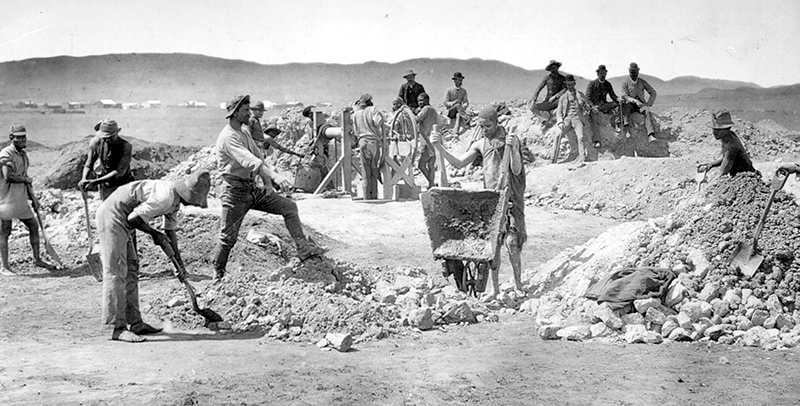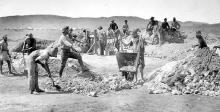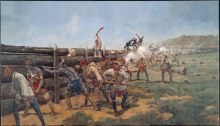
The late 19th century is an important period in South African history, as the discovery of diamonds and later gold sparked tremendous growth in population and an influx of money to the region. Michael Kramp is investigating the photographic representation of South Africa’s development through this Mineral Revolution and the Boer Wars is being investigated by Michael Kramp.
Kramp, associate professor of English, examines a period in South Africa starting in 1870 in which the country experienced tremendous industrialization and economic changes. His research focuses on a series of photographic albums and books, many of which were private collections that illustrate a culture in transition—often a culture in forced transition due to Britain’s imperial development—and photography’s influence on forming the Apartheid system.
“It overwhelmed and transformed South African culture,” says Kramp. “Vast amounts of European money, business interests, and emigrants came in and this pre-modern state becomes modern very quickly.”
The Mineral Revolution modernized diamond, gold, and other mining industries to the region that radically reconfigured the geography, economy, labor relations, transportation structures, and emigration patterns of South Africa. The Boer Wars would later decisively establish British economic and imperial interests in the area while shaping modern military tactics. By the end of the Victorian Era, South Africa was the world’s largest producer of gold and diamonds and one of Britain’s most valuable colonial holding. Subjects for photographers changed as the modern South African state emerged, says Kramp. Images from the 1880s highlight the wealth of the mining industry and are used as recruitment devices, intended to recruit immigrant labor from Europe and elsewhere, he says.
“At first, they are images of men working hard to successfully mine the land, but then photography changed to more conventional ethnographic images of the British trying to objectify native South African people. As you get closer to the beginning of the Boer War, the images begin to portray the military buildup.”
Kramp’s current project is an extension of his prior work studying nineteenth-century photography. During his ongoing research in London, he came across the photographic collections, and he has spent the last six months trying to interpret these various albums, specifically what type of narrative the images create.
Most of the images have never been seen before and certainly they haven’t been discussed critically, he adds.
“One of the great challenges to writing about photography is there is so much material,” he says. “One of the first things we need to do is make these images available in some sort of critical anthology so more people can write about them. Photographs are so vastly reproduced, the biggest challenge is to make sense of the depth of the images I have and how they were used. There’s some important work to be done.”


































